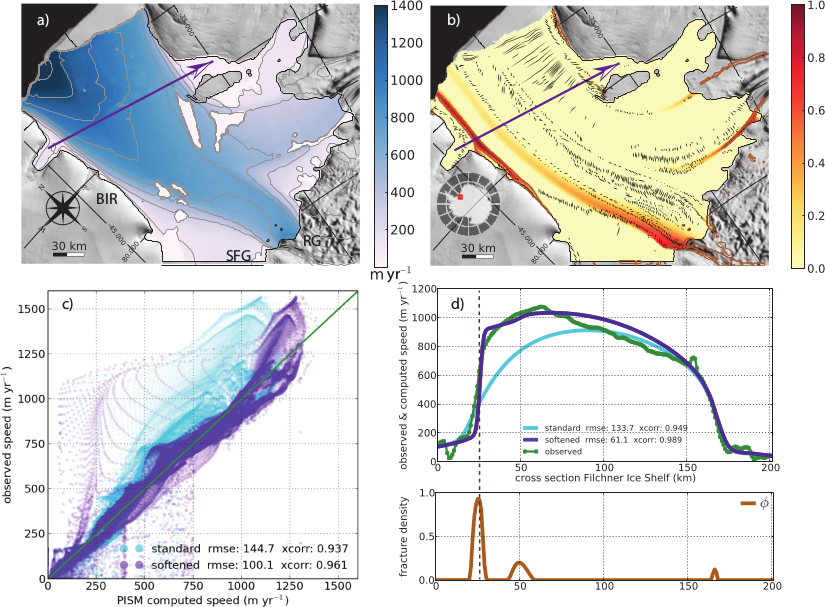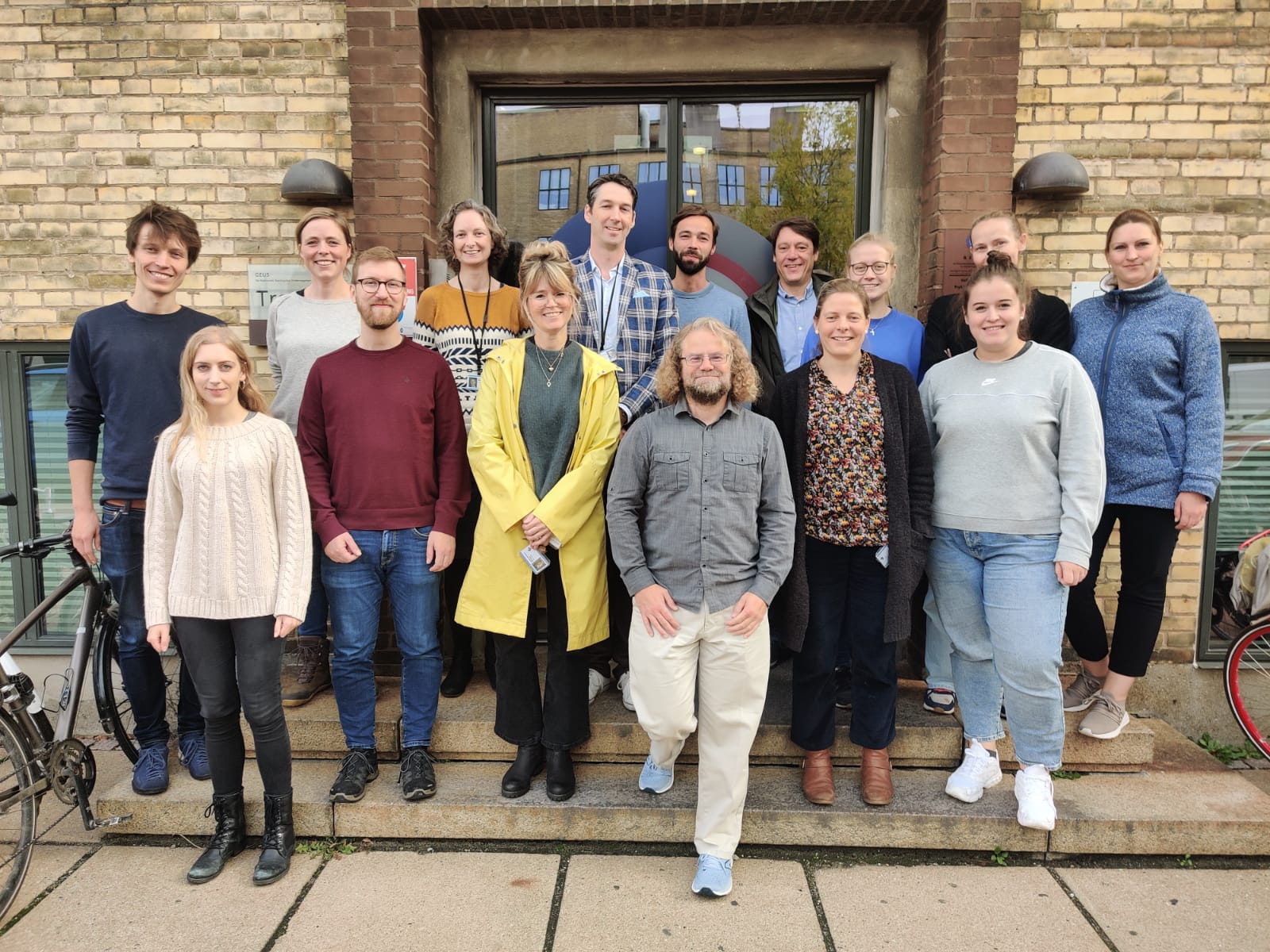Published: Dec 1, 2014 by The PISM Authors

Surface velocity, calculated fracture density, and modeled flow results for Filchner Ice Shelf.
| Title | Fracture-induced softening for large-scale ice dynamics |
| Authors | T. Albrecht and A. Levermann |
| Venue | The Cryosphere |
Fracture processes within ice shelfs have been observed to reduce the retentive forces of the shelves on the Antarctic ice sheet. This paper adds a continuum representation of fractures, and their evolution, to PISM, and applies it to several major ice shelves in Antarctica. A key addition is the introduction of a higher-order scheme for advecting the two-dimensional fracture density field. Fractures and ice flow are coupled through a reduction of modeled ice viscosity proportional to the fracture density, so fracture-induced softening can feed back to cause added shear and self-amplified fracturing. The results of the simulations are compared to observations. Observed sharp across-flow velocity gradients in fracture-weakened regions are reproduced. This fracture-softening model is a basis for a future model of enhanced fracture-based calving.
